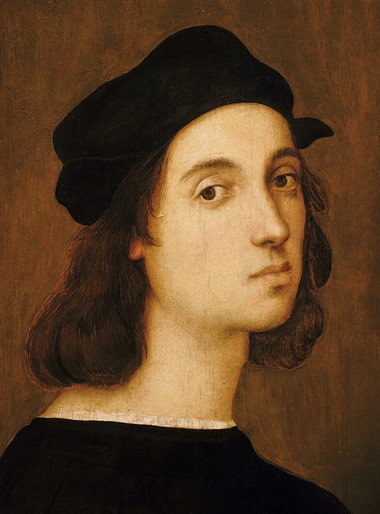Raphael Biography

Raphael (1483-1520) was a renowned Italian painter and architect of the High Renaissance, known for his harmonious and balanced compositions, as well as his exquisite use of color and light.
Born in Urbino, Italy, Raphael was the son of Giovanni Santi, a painter and architect, and was trained by his father from a young age. Raphael's early training was marked by a focus on classical themes and motifs, which would become a hallmark of his later work.
Raphael's artistic career began in the early 1500s, when he moved to Perugia to study under the tutelage of Perugino, a renowned painter and architect. During his time in Perugia, Raphael developed his skills in painting and architecture, and began to establish himself as a talented young artist.
In the early 1510s, Raphael moved to Rome, where he became a favorite of Pope Julius II and was commissioned to paint a series of frescoes in the Vatican. These frescoes, including The School of Athens and Parnassus, showcase Raphael's mastery of composition, color, and perspective, and are considered some of the most iconic and influential in the history of art.
Raphael's artistic style was characterized by its elegance, refinement, and classical themes. He was known for his use of harmonious colors and balanced compositions, which created a sense of calm and serenity in his paintings. His works often featured classical motifs, such as columns, arches, and domes, which added to their sense of grandeur and majesty.
Throughout his career, Raphael was recognized for his exceptional talent and was sought after by patrons and collectors. He was commissioned to paint a series of portraits, including those of Pope Leo X and his family, and was also known for his architectural designs, which included the famous Vatican Loggia.
Raphael's influence on the development of art is immeasurable. His works continue to inspire and influence artists and art lovers around the world, and his legacy as one of the greatest artists of all time is secure.